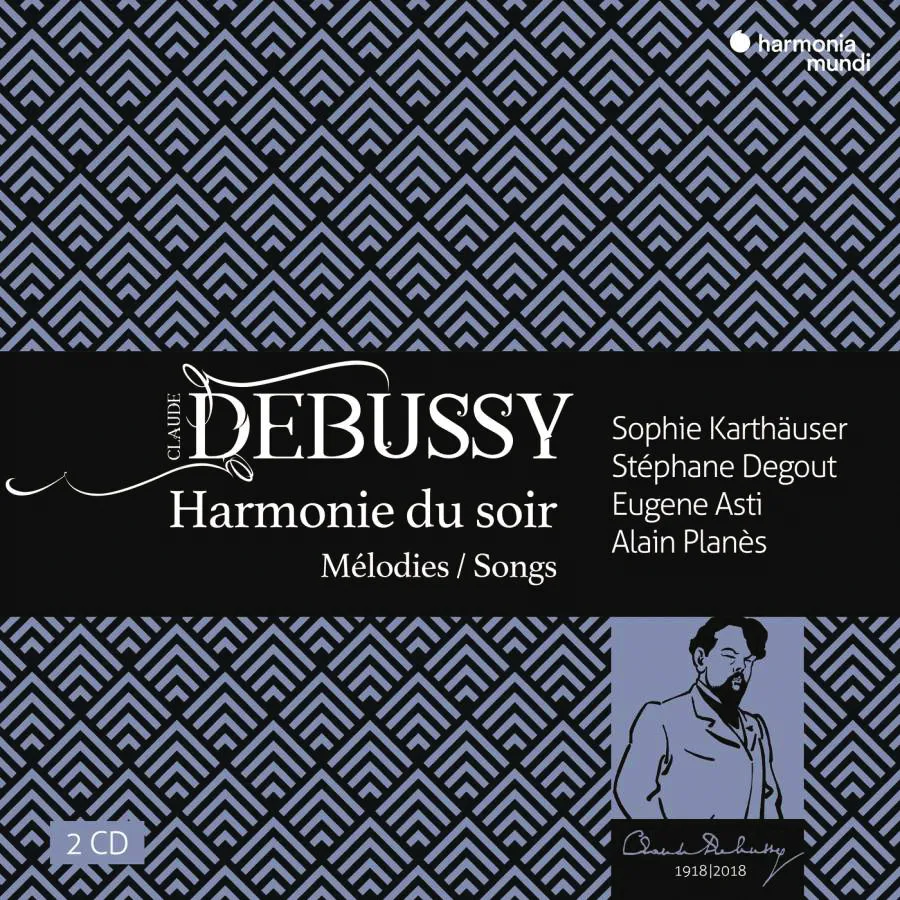
Debussy Nuit d’etoiles; Trois Mélodies de Verlaine; Fêtes galantes Books I & II; Images oubliées; Trois chansons de Bilitis; Trois chansons de France, etc Sophie Karthäuser (soprano), Stéphane Degout (baritone), Eugene Asti, Alain Planès (piano) Harmonia Mundi HMM 902306-07 125:51 mins (2 discs)
This substantial selection from Debussy’s songs covers virtually the entire period of his involvement with the genre, from the Théodore de Banville setting Nuits d’étoiles of 1880 through to the Trois Poèmes de Stéphane Mallarmé of 1913. Interspersing the songs are rare piano pieces: the three Images (oubliées) of 1894-96, unpublished until 1977, and the even smaller Les soirs illuminés par l’ardeur de charbon, written in 1917 for a helpful coal merchant but not published until 2004. There are two singers and two pianists involved: Belgian soprano Sophie Karthäuser is accompanied by Eugene Asti while French baritone Stéphane Degout is teamed with Alain Planès.
In terms of the pianists, there’s little to choose between two such expert, sensitive players, each in full technical and expressive command of their material. Planès tackles the Images (oubliées) while Asti is granted the coal merchant’s reward, and both convey the richness and subtlety of Debussy’s multifarious accompaniments. Karthäuser and Degout are well matched, too, though he is the more diligent of the two in exploring the niceties of the French texts and in extracting the last ounce of their (sometimes ambiguous) meaning(s). She excels in the lighter, earlier songs in which Debussy is developing his own style while continuing to reflect those of composers of an earlier generation, such as Fauré and Massenet; Degout has the ideal weight, colour and poise to explore the later, broader canvases of settings of Mallarmé, François Villon, Charles d’Orléans and Tristan l’Hermite.
George Hall